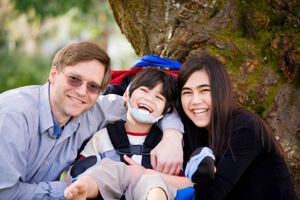
Cerebral Palsy Awareness
Earlier this month, two brothers walked 40 miles in the June heat to raise awareness about cerebral palsy. This walk was not a typical fundraiser for birth injuries. Indeed, Hunter Gandee, 14, carried his younger brother Braden, 7, for the entire 40 mile trek. Without assistance, Braden cannot walk on his own due to his having cerebral palsy.
Hunter hoped to draw attention to cerebral palsy and to encourage physicians and researchers to develop “new medical procedures and mobility devices” for those suffering from the disease. Hunter trained with weights to prepare his body for carrying his little brother that many miles. Hunter wore a harness that helped him carry his brother across the very long walk. On the first leg of the trip, the brothers walked 25 miles. For the final 15 miles, Hunter and Braden walked through rain to finish their 40-mile awareness trek.
Cerebral Palsy: Get the Facts
What is cerebral palsy? According to the Mayo Clinic, it is a “disorder of movement, muscle tone or posture that is caused by an insult to the immature, developing brain.” It causes impaired movement, which shows itself in “exaggerated reflexes, floppiness or rigidity of the limbs and trunk, abnormal posture, involuntary movements, unsteadiness of walking,” or a combination of these.
Typically, an injury that results in cerebral palsy occurs before or at birth. However, symptoms usually do not appear until children reach infancy or, in some cases, preschool years. With cerebral palsy, symptoms can vary significantly from patient to patient. The Mayo Clinic provides a number of signs and symptoms of cerebral palsy:
- Stiff muscles;
- Exaggerated reflexes;
- Muscle coordination difficulties;
- Tremors and/or involuntary movement;
- Motor skill problems or delays;
- Difficulty walking;
- Difficulty eating or swallowing;
- Speech development delays; and
- Difficulties with “precise motions, such as picking up a crayon or a spoon.”
When a birth injury results in cerebral palsy, individuals can also experiences additional brain injuries, which can result in some of the following neurological problems:
- Seeing and hearing disabilities;
- Intellectual disabilities;
- Mental health concerns; and
- Seizures.
What specifically causes cerebral palsy? In some cases, “random mutations” in genes that control development in the brain can result in cerebral palsy. However, more often than not, the cerebral palsy results from a preventable injury. Illnesses and injuries that can lead to cerebral palsy include:
- Infections in the mother during pregnancy: when a mother acquires an infection, it can cause harm to a developing fetus;
- Fetal stroke: when the blood supply to a developing brain becomes disrupted, a developing fetus can sustain se
ment, if a fetus sustains a head trauma in an accident, such as a slip and fall or a traffic collision, the injury can result in cerebral palsy; and - Asphyxia during labor or delivery: if a baby does not get enough oxygen during labor or delivery, it can lead to cerebral palsy.
Hunter Gandee’s incredible feat in carrying his brother 40 miles helped bring awareness to those suffering from Cerebral Palsy. Hopefully, with increased awareness and support, children suffering from cerebral palsy will see a better quality of life in the near future.



